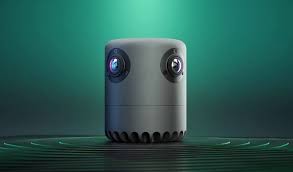Nokia has taken a bold step forward in technological innovation by introducing the world’s first 5G-enabled 8K 360° camera, a product designed to revolutionize immersive media and professional-grade videography. This cutting-edge device promises unparalleled video quality, seamless connectivity, and robust durability, catering to industries ranging from entertainment and sports broadcasting to disaster management and industrial applications. With this launch, Nokia solidifies its reputation as a pioneer in pushing the boundaries of technology and meeting the demands of a rapidly evolving digital ecosystem.

The unveiling of this advanced camera is not just about pushing technical limits but also about addressing the growing need for immersive experiences. As 5G networks expand globally, the demand for high-quality, real-time content that offers a comprehensive view of events has never been greater. Nokia’s 8K 360° camera, with its high-resolution output and capability to live-stream using 5G networks, sets a new standard for how video content is captured, shared, and consumed.
At the core of Nokia’s latest offering lies its ability to capture 360° video in stunning 8K resolution. This feature ensures that every detail within the frame is crystal clear, catering to professional users who require high-quality visuals for applications such as virtual reality (VR), augmented reality (AR), and cinematic production. The camera’s compatibility with 5G networks further enhances its appeal, enabling real-time streaming without compromising on resolution or frame rate. This capability is particularly crucial for live events, where delays or quality drops can significantly impact viewer engagement.
What sets this device apart is not just its technical prowess but also its rugged design. Engineered to withstand harsh environments, the camera is dustproof, waterproof, and shock-resistant, making it suitable for outdoor shoots, disaster response scenarios, and industrial inspections. Nokia has incorporated a sturdy casing and advanced sealing technology, ensuring that the camera remains operational even in extreme conditions.
Moreover, the camera’s user-friendly interface and compatibility with existing editing and broadcasting tools simplify its integration into professional workflows. Users can control the device remotely via an app, adjust settings in real-time, and seamlessly transfer footage to editing suites. This ease of use, combined with its robust feature set, positions the camera as a versatile tool for professionals across various sectors.
Industry Applications and Market Potential
The potential applications of Nokia’s 5G 8K 360° camera are vast and varied. In the entertainment industry, the device can be a game-changer for filmmakers and content creators seeking to deliver immersive experiences. The ability to capture every angle in ultra-high resolution allows directors to craft stories that fully engage viewers, whether through VR films, interactive gaming, or live concerts. Sports broadcasters, too, stand to benefit, as the camera enables viewers to feel as though they are part of the action, with the freedom to explore every aspect of a live event from their perspective.
Beyond entertainment, the camera has significant implications for industries such as healthcare, education, and disaster management. In healthcare, for instance, the device could be used to create detailed 3D models of surgical procedures, enhancing medical training and patient care. In education, it offers the potential to develop interactive learning modules, allowing students to explore environments and concepts in ways that traditional media cannot provide. For disaster management, the camera’s rugged design and 360° coverage make it ideal for assessing hazardous areas, coordinating rescue operations, and documenting recovery efforts.
A closer look at the market reveals that Nokia’s latest innovation arrives at a time of growing demand for immersive content and high-speed connectivity. According to industry reports, the global VR and AR market is projected to reach $296.9 billion by 2024, driven by advancements in hardware and increasing consumer interest in immersive experiences. Similarly, the rollout of 5G networks is expected to create new opportunities for content creators and broadcasters, as faster speeds and lower latency enable more complex applications. Nokia’s 8K 360° camera, with its blend of cutting-edge features and rugged reliability, is well-positioned to capitalize on these trends.
| Market Segment | Potential Applications | Impact |
|---|---|---|
| Entertainment | VR films, live concerts, gaming | Enhanced viewer engagement and storytelling |
| Sports Broadcasting | Live matches, player analysis | Immersive viewing experiences |
| Healthcare | 3D surgical models, training modules | Improved medical education and patient care |
| Education | Interactive learning, virtual field trips | Enriched educational experiences |
| Disaster Management | Area assessment, rescue coordination | Improved operational efficiency and safety |
| Industrial Inspections | Equipment monitoring, remote diagnostics | Reduced downtime and maintenance costs |
Challenges and Future Prospects
While Nokia’s 5G 8K 360° camera represents a significant technological leap, its success will depend on overcoming certain challenges. One of the primary obstacles is the high cost associated with 8K technology and 5G connectivity, which may limit accessibility for smaller businesses and independent creators. Additionally, the large file sizes generated by 8K footage require robust storage solutions and high-performance editing systems, further raising the barrier to entry.
Another challenge lies in the adoption of 5G networks, which are still in the early stages of deployment in many regions. Without widespread 5G coverage, users may not be able to fully utilize the camera’s real-time streaming capabilities. Addressing these issues will require collaboration between hardware manufacturers, network providers, and content creators to ensure that the necessary infrastructure and support systems are in place.
Looking ahead, the future of Nokia’s 8K 360° camera seems promising, thanks to its potential to drive innovation across multiple industries. As technology continues to evolve, the camera could serve as a catalyst for new forms of storytelling, communication, and problem-solving. By enabling users to capture and share their perspectives in unprecedented detail, Nokia’s latest innovation has the potential to redefine how we interact with the world around us.
Nokia’s unveiling of the world’s first 5G 8K 360° camera is a landmark achievement that underscores the company’s commitment to pushing technological boundaries. By combining exceptional video quality, seamless connectivity, and rugged durability, the camera addresses the needs of a wide range of users and applications. As you explore the possibilities offered by this groundbreaking device, it becomes clear that Nokia is not just shaping the future of content creation but also opening up new horizons for innovation and collaboration.










Add Comment